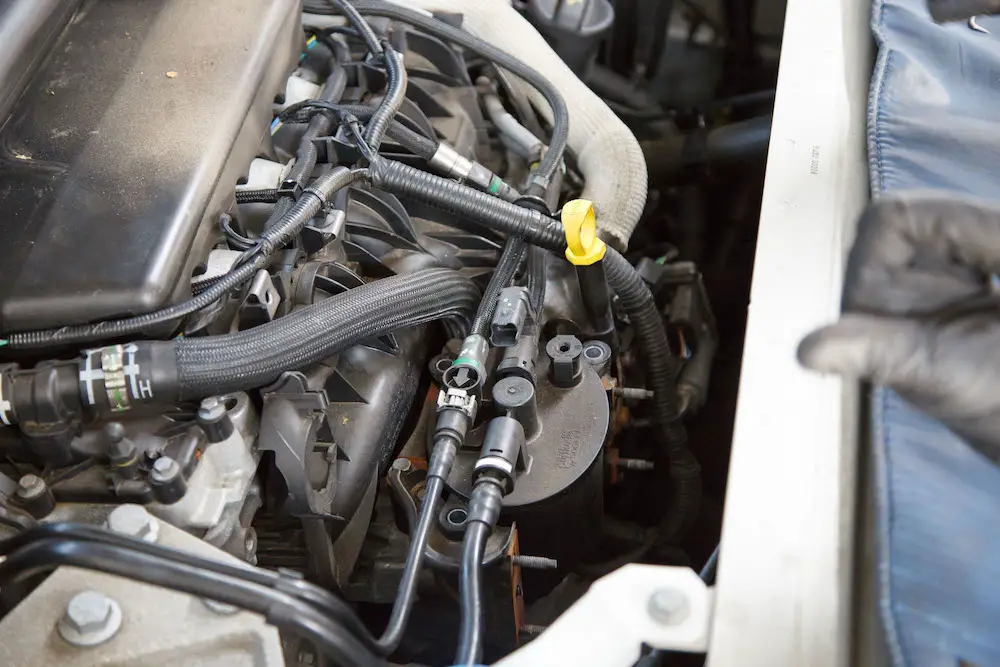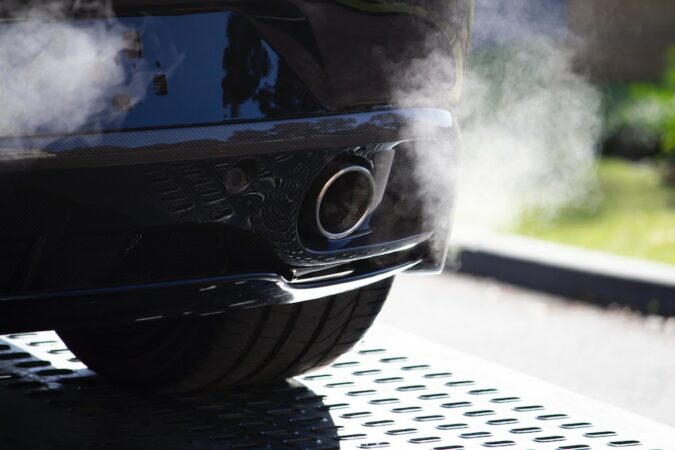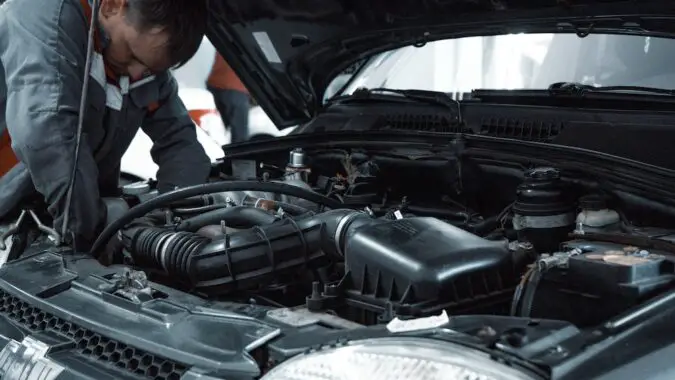A gasket is a seal that sits between two large components on an engine. The car engine has several of these, one of which is the intake manifold gasket. While it’s a simple part, it plays a huge role in ensuring your engine runs smoothly.
Like any other gasket, it will wear down over time. As a result, it won’t seal properly and will affect your engine’s performance. This article will be your ultimate guide to the intake manifold gasket:
What Is An Intake Manifold Gasket?
Before we get into the symptoms and how to troubleshoot, it will help to make sense of things by understanding what the intake manifold is and its gasket. Car engines are horrifyingly complicated, so knowing the basics will make it easier to understand the symptoms and repairs.
As mentioned, the gasket is a seal that sits between two or more large components in the engine. In short, its purpose is to prevent leakage. In the case of the intake manifold, the gasket is there to act as a seal between the manifold and the engine’s cylinders. Make sure that air doesn’t escape nor let unwanted air enter the engine.
Additionally, a gasket sometimes acts as a cushion between the two components so that they don’t damage each other. How about the intake manifold then? What does that do?
The intake manifold, in simple terms, is the component that supplies air and fuel into the engine’s cylinders. We’re going to let Jason Fenske take over and explain it:
To summarize, your engine takes in air through the air intake system. The throttle body then regulates how much air to allow into the manifold. Afterward, the air will travel through the intake manifold, and the flaps inside it will open at the appropriate timing to allow air and fuel to enter the cylinders.
Your car’s engine requires the right air-to-fuel mixture to work properly, hence the need for the gasket to seal the system and make sure that air doesn’t escape, nor let excess air enter the engine.
Our explanation is a little bit of an oversimplification, but that’s the gist of what the intake manifold and the gasket do. We really recommend watching the video above from Jason Fenske to understand further and to get a visual idea.
Symptoms You Have A Bad Intake Manifold Gasket
The intake manifold gasket will wear down over time. Whether yours is made from rubber, steel, or nitrile rubber, they eventually won’t seal properly anymore and will cause a leak.
The gasket may be a small part, but because it plays an important role, you will see symptoms when the gasket manifold fails. Here are the symptoms you might see on your car:
1. Performance Changes
Since it’s a crucial part of your engine, a leaking gasket can cause performance issues. This can manifest in a couple of different ways: for example, if the leak causes excess air to enter the engine, your car will be running lean (too much air)
Lean fuel and air mixture can reduce performance, and at a certain point, may also cause engine misfires. An engine misfire happens when one or more of the cylinders isn’t firing. And in this case, it’s because the mixture is too lean to combust.
A different scenario is if the leak causes air from the intake system to escape. In this case, your engine won’t be getting enough air. Most engine control units (ECU) will compensate for this by putting more fuel into the engine so it can keep going.
This means your engine will be running on a rich mixture (too much fuel). Over time, this will result in an excess build-up of carbon deposits that can shorten the lifespan of internal components. And needless to say, you will see a drop in fuel consumption.
2. White Smoke From Exhaust Or External Coolant Leak
Your car’s exhaust gas color can tell a lot about your car’s condition. The exhaust is supposed to produce clear and almost odorless smoke. If there’s white smoke coming out of the exhaust, that means there’s moisture inside the cylinders since burning moisture results in white smoke.
A thin white smoke during a cold start early in the morning is perfectly normal. However, thick white smoke that persists even after the engine warms up means that your engine is burning coolant. This is what’s known as an internal coolant leak.
Your engine coolant is supposed to travel through passageways in the engine, including inside the intake manifold. If the gasket leaks, depending on where the gasket leaks, it can cause coolant to enter your engine’s cylinders. Coolant will be burnt with the fuel and air mixture resulting in thick white smoke.
This will eventually lead to overheating since your engine is losing coolant. The cooling system won’t be able to maintain pressure and work properly without enough coolant. Additionally, coolant mixing in the engine can cause excess friction and will damage your engine in the long run.
Keep in mind that other things can cause coolant to enter the engine’s cylinders, such as a bad head gasket. So, you’ll need to diagnose it further, which we’ll discuss in the troubleshooting section.
A bad intake manifold gasket can also cause an external coolant leak. In this case, you’ll see coolant leaking out and possibly dripping out from your engine bay.
Note that other things can cause coolant leaks, so inspect your engine bay to see where the leak is coming from. Locate the intake manifold, and see if there’s coolant in the area. If not, then your coolant leak is coming from somewhere else.
3. Coolant Mixing With Oil
This is another possible outcome of an internal coolant leak. Depending on where the leak is happening, coolant may mix with your engine oil rather than entering the cylinder.
This can be detrimental to your engine, as coolant will cause oil to lose lubricity. If the oil isn’t lubricating the engine properly, your engine will experience excess friction which will cause internal components to wear out. This will also cause the coolant to lose its ability to transfer heat away. As a result, your engine will overheat.
You should be able to check this by pulling out the engine oil dipstick. It usually has a yellow handle that says either ‘Engine’, ‘Oil’, or has an engine oil icon on it. Pull it out, and inspect the oil on the dipstick.
Oil should either be clear with a brownish hue or dark brown (if it’s old) and quite thick. If the oil is light brown and looks almost like gravy, then this means they’re mixing with the coolant.
You can also check by inspecting the coolant inside the radiator. Wait for your engine to cool down, then open the coolant radiator cap and inspect the coolant inside it. If there are brown specks in the coolant, this means your oil and coolant are mixing.
As mentioned, other things can cause an internal coolant leak such as a blown head gasket. Regardless of the cause, you’ll want to address this as soon as possible before it causes any more damage to your engine.
4. Check Engine Light
The last symptom that might appear is a check engine light illuminating your dashboard. The check engine light turns on when the car’s On-Board Diagnostic (OBD) system detects a problem with the car.
When the car’s ECU gets a sensor reading that’s out of the ordinary, it will activate certain actuators to try to rectify the problem. If the problem persists, it will register an error code in the OBD system and trigger the check engine light to warn the driver that something isn’t right.
A leaking intake manifold gasket can trigger this. And if you scan the OBD system, it will usually return a P0171 or P0174 code. You can check this by getting a hold of an OBD scanner, which usually costs no more than $50 for the basic ones. If your car has an OBD-2 system, here’s how to use the scanner:
Keep in mind that this method is for cars after 1996 which has a universal OBD-2 system. Cars before 1996 have an OBD-1 system and it works differently, not to mention they’re proprietary. So, you’re going to have to research further on how it works for your car’s make and model.
Both the P0171 and P0174 code means that the engine is running lean. However, the intake manifold gasket isn’t the only possible cause. So, you’ll have to diagnose further. This brings us to how to troubleshoot the problem:
How To Diagnose Intake Manifold Gasket
Unfortunately, troubleshooting the intake manifold gasket can be a bit tricky. There’s no surefire way test that can determine whether you have a gasket leak or a different problem.
However, if you see all the symptoms above then there’s a big chance that you have an intake manifold gasket. The next thing you can do to verify is by doing a smoke test:
By using a smoke machine, introduce smoke into the air intake system. If the smoke escapes from the intake manifold area, then this is an indication that you have an intake manifold gasket leak. Visually inspect the manifold, if you don’t see any damage to them, it’s likely to be a gasket leak.
It’s also possible that the smoke will escape from one of the vacuum lines. The engine has several vacuum lines that help to maintain pressure inside the engine. If one of them leaks, this can cause an engine performance drop, but not a coolant leak. However, they can also trigger the same error codes.
Unfortunately, that’s all we can give you on how to diagnose the intake manifold gasket. If you’re not sure that the gasket is the problem, take your car to a trusted auto repair shop and ask them to diagnose the problem for you.
Intake Manifold Gasket Replacement Cost
The gasket is usually a simple piece of rubber, and will usually cost between $12 – $50 for most cars. We did a little bit of research, and even in luxury cars such as Mercedes they usually cost no more than $70.
However, the labor is going to be quite expensive. RepairPal estimates that the labor cost for an intake manifold gasket replacement is around $217 – $273. This brings the total cost to somewhere between $229 – $323. Your estimate will vary depending on labor rates, and doing the job at a general auto repair shop will be cheaper than doing it at the dealer.
The reason for the high labor cost is that the process takes some time and skill. While you don’t need specialized tools, the process entails draining the cooling system, removing the manifold, installing the new gasket, and then reinstalling the manifold back onto the engine.
The process will take some time to finish, and it’s harder than it sounds. However, since you don’t need specialized tools, you can undertake this project to save money on labor costs:
DIY Intake Manifold Gasket Replacement
Note that this is an intermediate-level job. If you’re not sure about your mechanical skills, we recommend leaving this job to professionals.
Also, note that this is more of a general guide on the process. The exact steps will vary depending on your car’s make and model. And in some cars, it may be more complicated as you may need to remove certain components before you can access the intake manifold.
Preparation: Draining The Coolant
First, we will need to prep the car before you can start working on the intake manifold gasket. Since coolant travels through the manifold in most cars, you’ll need to drain the cooling system first.
Check your owner’s manual or do a quick internet search to find out. If your car doesn’t have coolant passages in the intake manifold, you can skip this process. Otherwise, do the following steps:
- Make sure the engine is cold to the touch. If you’ve been driving, wait for a couple of hours before you start working.
- Put the car in ‘Park’ or first gear if it’s manual, and make sure the parking brake is on.
- Jack up the car and put it on jack stands.
- Locate the cooling system’s drain plug, you should be able to find this information in the owner’s manual.
- Prepare a clean pan underneath. Most cars have about 3 gallons of coolant in the system, so prepare as many pans as necessary.
- Open the plug until coolant flows out.
- Catch the coolant and set it aside. You can reuse the coolant for later as long as you use a clean pan to store it.
Now, once your car is prepped, we can start working on the intake manifold:
How To Replace Intake Manifold Gasket
- Clean the engine bay if necessary. You don’t want loose dirt to enter the engine in the process.
- Locate the intake manifold and see if you can gain access to it. If not, remove components that are in the way. Take photos of these components and their connections (such as hoses & wires) so you know where each one goes when you reassemble them.
- Once you gain access to the intake manifold, remove its connections. There are usually several hoses that connect to it, take pictures or mark them so that you know where they go when reconnecting them.
- Remove the bolts, and then remove the intake manifold.
- Remove the old gasket from the manifold and clean the surface using a plastic scraper, make sure there is no more residue when you’re done. DO NOT use a metal scraper as it can damage the surface.
- Check the installation manual to see if the gasket requires a sealant. Only use sealants that are oxygen sensor safe.
- Afterward, attach the new gasket onto the intake manifold. Make sure it aligns perfectly.
- Reinstall the manifold onto the engine. Hand-tighten the bolts, and once you’re sure they’re aligned, tighten the bolts.
- Reconnect the hoses and other connections, and reinstall other components that you may have removed to gain access to the manifold.
- Tighten the cooling system’s drain plug, and then refill the system. You can reuse the old coolant if you like, but you should flush the system if the coolant looks dirty.
The video above from ChrisFix is a guide on how to change the intake manifold, but it will give you a good idea of how to change the gasket. His particular Mustang required him to remove the throttle body and alternator to gain access to the manifold which complicates the process.
Seems Difficult, Should I Do It Myself?
If you have to ask, you probably shouldn’t. As a general rule, if you can immediately gain access to the intake manifold, then you should give it a shot. This will only require you to remove several connections, including the one to the throttle body.
However, if it requires you to remove other components such as the throttle body or the alternator, then we recommend leaving this job to professionals unless you’re sure you can do it.
It’s better to spend hundreds of dollars on a professional repair job than screwing up a DIY repair job and spending even more money to rectify the problem.
Facts about Intake Manifold Gasket Replacement:
- The cost of an intake manifold gasket replacement typically ranges between $552 and $610.
- The labor cost for an intake manifold gasket replacement is estimated to be between $214 and $270, while the cost of parts is priced between $337 and $340.
- The cost of intake manifold gasket replacement can vary based on location and the type of vehicle being serviced.
- An intake manifold gasket is a seal that properly seals the intake manifold to the cylinder head, which is necessary for the engine to run.
- Intake manifold gaskets can be made of rubber or paper.
- The intake manifold distributes air (and sometimes fuel) throughout the engine.
- A vacuum builds up inside the intake manifold, and the manifold gasket prevents any unwanted air from entering the system.
- Symptoms of a bad intake manifold gasket include illuminated check engine light, erratic engine performance, oil and coolant leaks, poor gas mileage, and stalling.
- There is no set schedule to replace the intake manifold gasket, but it is often replaced when doing related engine repairs to prevent future problems.
Intake Manifold Gasket FAQs
Still, have questions about the intake manifold gasket? Here are some answers you might find useful:
Can I Drive With A Bad Intake Manifold Gasket?
You technically can, but you shouldn’t, especially once you see symptoms. Engine misfires and an internal coolant leak can cause further damage to your engine’s internals. Over time, your engine can fail in which case you will need an engine rebuild. Needless to say, this will cost thousands of your precious dollars.
How Long Does The Gasket Last?
The intake manifold gasket will last between 50,000 to 75,000 miles. Although in some cases, it may last longer than that. It depends on the design and quality of the gasket.
Make sure to keep up with general maintenance so that your engine runs smoothly, this will help the gasket to last longer – provided there are no design or quality flaws in the first place.
What Causes The Gasket To Fail?
They fail because of heat, and it’s normal for them to fail over time. Rubber will harden and eventually won’t be able to seal properly. However, if the gasket fails early, this is usually because of overheating.
If your engine overheats, the cylinder heads tend to expand. When it expands, it crushes and damages the gasket and it won’t be able to seal properly. This is why you shouldn’t ignore an engine that’s overheating.
An engine usually operates between 195 to 220 degrees Fahrenheit, and even the slightest increase can cause problems like an early gasket failure. This increase in temperature might be so minuscule that you wouldn’t notice the change in the temperature gauge, but it can still cause problems.
Again, you really shouldn’t ignore an overheating engine. If your car is overheating, read our guide on how to find overheating causes to prevent further engine damage.
When Do I Need To Replace The Intake Manifold?
Unlike the gasket, there’s no lifespan rating for the intake manifold. It may last 100,000 miles, or it may last the car’s lifetime. Simply pay attention to how your car runs, and replace the intake manifold if it seems to have gone bad.
Intake Manifold Gasket: Wrap Up
To summarize, the intake manifold gasket is a rubber piece that sits between the intake manifold and cylinder heads. It acts as a seal between the two components so that air won’t escape and prevent excess air from entering the engine. This helps to ensure that the engine gets the correct air-to-fuel ratio, which keeps your engine running smoothly.
The intake manifold gasket typically lasts between 50,000 to 75,000 miles, although they can last longer than that. While a simple piece, they play a crucial role and a gasket leak will cause noticeable symptoms, such as engine misfires, coolant leak, and a check engine light.
The intake manifold gasket is quite cheap and is usually no more than $50 for most cars. However, labor will cost anywhere between $217 – $273 and the total cost is usually somewhere between $229 – $323.
You can save money by doing the replacement job yourself, but we recommend doing this only if you’re mechanically adept or you can easily gain access to the intake manifold. Otherwise, it’s probably best to leave the repair job to a professional. Hopefully, this has been a helpful guide to intake manifold gasket for you and good luck!





